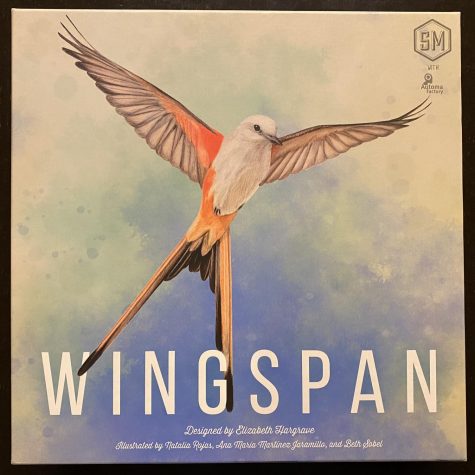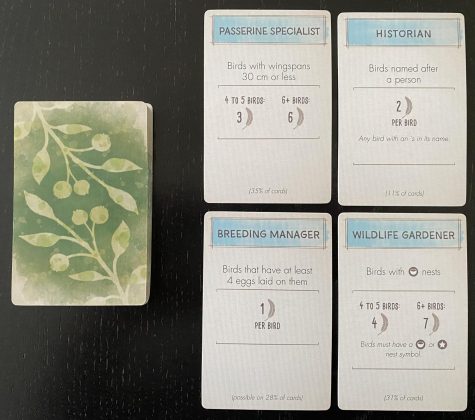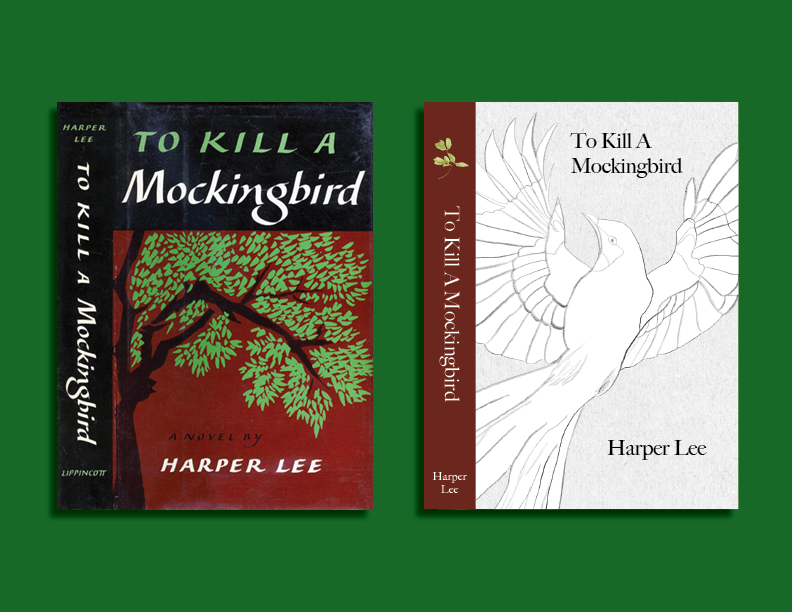
One of the most talked-about games in the past few years is Wingspan. I’ve had my eye on this game for a long time, but it was so popular that it took over a year for me to get a copy of it. Wingspan won the prestigious Kennerspiel des Jahres in 2019 and has been raved about by many people in the board gaming community. Let’s find out if the hype for Wingspan is real and what you need to know about it.
How to Play
Wingspan takes place over the course of four rounds. In each round, players will take turns using an action cube to either play a bird, get food, lay eggs, or draw bird cards. Once all players use their action cubes, players will put one of their cubes to mark points for an end of the round goal. While that means you get fewer actions in the later rounds, your actions get better since many of the bird cards grant powers to spice up the “get food,” “lay eggs,” and “draw card” actions. That’s a generic overview of the game. Now we can get into the specific details.

The game starts with all players choosing what bird cards they want to start with. Each player will get five bird cards and one of each of the five food types: invertebrate, seed, fruit, fish, and rodents. Players can keep any number of bird cards, but they must discard one food for each card they keep. If you are playing for the first time and can’t make an educated decision, the game comes with a Swift Start Pack that guides players through this decision and their first four turns. Regardless of how you start, you must also choose one of two bonus cards that will provide points at the end of the game.
Now it’s time to take action. There are four actions that players will choose from on their turn. The steps for each action are clearly marked on the player boards.
One of these actions is to play a bird. To do this, you must have a bird card in your hand to play, the food stated on the card, and the proper number of eggs, based on which column in the habitat the bird will be played in. Place your action cube in the top row of your player board, called “play a bird,” on top of the column where you will place your bird card. You’ll find this column by looking at which habitat the bird can live in; you always place birds from left to right in each habitat. The number of eggs you need to pay is shown above each column, and the required food is shown on the bird card. When paying food, any two food can be used as one food of your choice. After playing the bird, move your action cube all the way to the left of the player board by the “play a bird” heading. If the bird you play has a “when played” ability, resolve it immediately after playing the bird.
The other actions you can pick from are “get food,” “lay eggs,” and “draw cards.” If you choose any of these actions, place your action cube to the right of any birds in that habitat. You’ll then get some food, eggs, or bird cards based on how many of that resource is shown on the space. Afterward, you will move your action cube left and use the “when activated” power of any birds in that row.

Using the picture on the left, the player chooses to get food. They put their cube on the second space of the “get food” row. This lets the player take one dice from the bird feeder and the matching food token, as well as discard a bird card to take another die. Whenever you take dice from the birdfeeder, and all the dice remaining show the same face, you may reroll all five dice before you take a die. After taking food, the player can activate the brown power on the bird in the first column.
Instead of taking food, the player could choose to lay eggs. As shown by the second column, the player gets two eggs and may spend one food to get a third egg. The player can put these eggs on any birds up to the limit shown on each card. The player can then choose to activate the brown power on the bird in the first row, which lets all players lay an egg in a certain kind of nest. Eggs are needed to play bird cards and are worth one point at the end of the game.
Using the same photo, the player can choose to draw cards. They place their cube on the fourth space in the bottom row this time. They draw two cards and have the option to spend one egg to draw another card. Unless specified, you can draw cards from the face-up options or the top of the deck. The first two bird cards do not have brown powers, so they cannot use them now. They can use the power in the leftmost column because it is a “when activated” power. At the end of your turn, replace any empty spaces in the bird tray with ones from the top of the deck.
I mentioned “when played” and “when activated” powers. The other kind of bird power is a once between turns power. It activates when another player does something, such as choosing the “lay eggs” action or playing a bird in a certain habitat. Some bird powers let players tuck cards behind birds or cache food tokens by putting them on the bird. Each of these items is worth one point at the end of the game.
At the end of the game, players will add up points for their birds, end of round goals, and bonus cards; they get one point for each egg, cached food, and tucked card. The player with the most points is the winner.

Final Thoughts
That’s a comprehensive overview of how to play Wingspan. If you didn’t get all of that, you have nothing to worry about because the rulebook is very clear. If you have questions about the bird’s powers while playing, an appendix includes everything you need to know. I did notice that a few powers and bonus cards were missing from that list, but it would have been nice to include all of them, even if they were simple.
Before I even played the game, the components and artwork were astonishing. The main thing that doesn’t come in most games is a dice tower to roll your dice. Wingspan came with a cardboard birdfeeder and instructions for building it. It’s a little weird that you put the dice in from the back instead of the top, but it does the job and is a cool thematic addition. The bird tray is multi-purpose since you can put the cards on the tray during the game and store the cards in the container afterward. The card quality is good, and the card backs are symmetrical, so you don’t have to worry about putting the cards in the same direction.
Better than the card quality is the card artwork. I really enjoy how all the cards have a different bird and artwork of that bird. It’s clear that the game explores one of the designer’s passions, which most games do not have. The player boards are a really cool opening like a journal or book, and the artwork on the inside is fantastic.
Now let’s move on to the game experience and mechanisms. I really like the engine-building mechanism. I think it’s a clean design because everything goes together and is easy to figure out with the player boards. The cool thing about the engine-building is that I play a bird, and now two things happen. I make one of my other actions better, and I might have an additional power to activate every time I take that action. I also like that you need food, eggs, and a card to play a bird, so no action takes you away from the game’s main focus.
I like how all the birds in the deck are different. Then, that species’s traits determined many aspects of the card, such as what habitats the bird can live in, the food it eats, its nest type, and its wingspan. In addition to being different, there are so many bird cards that I could play two or three games using entirely new bird cards.

From a strategic perspective, there are many critical decisions from your initial bird selection to which actions you take each turn. Maybe you want to draw cards, but you see that you could reroll all the dice and have to decide between getting food or drawing cards. There are a ton of interesting combinations you can build in each row to shape your strategy. I feel like I’m playing a different strategy every time because I get different things out of each action because of my bird powers. Looking at scoring, you have many ways to score points, whether you go for expensive birds worth more points or birds with powers that let you tuck cards. You can try to maximize your eggs since they are each worth a point, or you can try to fulfill your bonus cards.
The one scoring method that is a little strange is the goals. The goal mat has a blue, independent side and a green, interactive side. The blue side gives you one to five points based on how many times you meet the end of round condition. This is fine for most of the goals, but all players will likely maximize the number of points they can earn by rounds three and four. I prefer the green side, where players score points based on how they do compared to other players. I also like playing with this side because it adds some player interaction to the game.

You should note that the game is a medium-weight game. This is not a gateway game that you can get for someone who doesn’t play many games. But if someone has played some other games, they are sure to like Wingspan. The game sometimes takes longer than the 40-70 minutes on the box, but that’s usually when you have new players or many players. The game plays well with 2-4 players. I haven’t tried five, but the main difference is just game length.
The game does have a solo variant that I haven’t played yet. I did see that the solo game has a separate rulebook and cards just for the solo game, so it looks quite promising.
After playing the game quite a bit, I believe the game’s hype was real and accurate. Everyone I’ve played with has said the game is somewhere between good and amazing. The $50-65 cost is worth it because of the wonderful components, artwork, and theme. In addition, Wingspan is always an enjoyable game; I will give Wingspan a 10 out of 10.
[star rating=”5″]






















